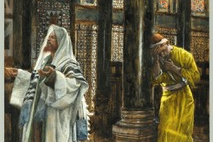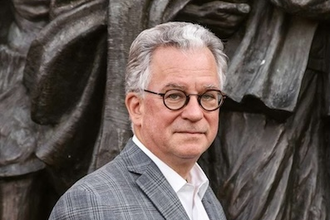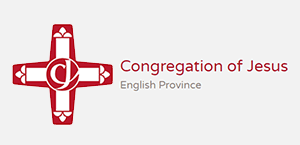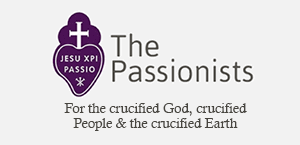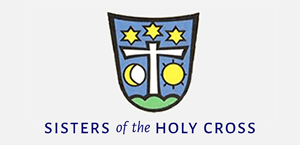Sunday Reflection with Canon Robin Gibbons: 1st June 2025
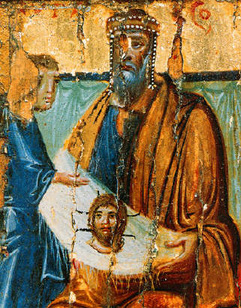
Abgar with image of Edessa 10th C
Seventh Sunday after Easter
1. To see Christ?
How do you visualise Jesus? Christian art has consolidated around one particular type of image, we recognise it instantly, the bearded long haired image, particularly striking in the Icons of the Eastern church, this style goes back a long way and there is a tradition that Jesus himself sent an impression of his face to Edessa, from where comes the tradition of the mandylion, the 'image not made by hands'. But in truth we have no description or contemporary portrait of him, or indeed of Mary his mother, Our Lady! Does this matter, in one sense no for it allows the risen Christ, who was not at first recognised by others, to enter into a deeper context of faith, pushing us to examine the heart looking beyond the image or icon, which is only representative. This is why we also find the image of Christ and Mary rendered in other art forms by other cultures, take for example the image of Our Lady of China who is represented as a Chinese woman dressed in brocaded Chinese clothes, as is her son Jesus. This is the cosmic Christ of all races, nations and peoples, who is not defined by one image at all.
Some Christians find this shocking, but that is because they have not yet moved out of their own cultural assumptions, if you feel a bit like that, then the gospel of this Sunday may help you to shift perceptions a little. Take this sentence:' "I pray not only for them, but also for those who will believe in me through their word, so that they may all be one, as you, Father, are in me and I in you, that they also may be in us, that the world may believe that you sent me'. Jesus is praying not that we might see him in a direct human form, rather he is taking us to the heart of the resurrection, that his risen body, his abiding presence is now to be found in us, for we too are the reflected icon of the Risen Lord.
2. How will we recognise Christ?
Our belief in him comes not through statues, images, icons, historical proof, but through the word preached, proclaimed and shared with us, which enters into us to transform us. It is as one of my favourite word-image shared by a Trappist nun who asks herself and us of us the question, 'when we die, how will we recognise the Lord Jesus who is the first face we shall see after that sleep of death?'
The answer she shares is wonderful, for she tells us the deep spiritual truth that we will recognise him, on the account that his face will be the face of 'Love' and we shall know it, but then having met him face to face, we will also see him in the company of heaven, our friends and relatives there to greet us, and perhaps for the first time, we shall see in each one of them, the glory that is Jesus, the love that is his binding us as one by the Spirit, each dear face, each dear one, now understood as a gift of the Christ.
Yet we need to note the stages of our own enlightenment in Christ. We meet the risen and ascended Lord first by a faith opened up by the voice of God touching us, mainly in the words of Scripture. Then as our hearts are quickened by faith, we discern that love, which is God, appearing in our lives more as a relationship helped by the Spirit's gift of insight, discernment and knowledge. It is only when we have responded, prompted and assisted by our images of Christ, that the reality of a relationship occurs and we learn to let go of these type of visual aids to enter into something greater. It is as Jesus prays :"Father, they are your gift to me. I wish that where I am* they also may be with me, that they may see my glory that you gave me, because you loved me before the foundation of the world.( Jn 17:24)
Have you picked up that new image of relationship?We are with him, yet we do not see him, but we know him, and it is then, when our relationship with Christ starts to grow that the 'glory' that is the presence of the All Holy One begins to be seen not with our eyes but with our whole being. We are Christ's reflected and refracted glory, as is everything touched by love,humans, all living creatures and the beauty our planet and cosmos as well.
3. Hints and pointers
The first and second readings of this Sunday give us a context in which we both discern the working of grace as in Stephen and in Revelation find the end of all things laid as a hint of what is to come. The martyrdom of Stephen reminds us of two things, that bad things happen to good people, and that good people do bad things, but that even these nasty things can be turned around by the love of Christ. Saul is a consenting witness to the killing of Stephen, fierce in his opposition to this new movement, yet he will through an encounter with the merciful Lord, change to Paul the great missionary and teacher for Christ. Those words of forgiveness by Stephen must have entered his mind and soul, and I assume, started the process of becoming open to Christ Jesus, the Alpha and Omega of our lives. The passage from revelation gives us a few helpful images to pray with, particularly in the descriptions of Christ. May the Lord, root and branch of David, our never setting Morning Star be our support and guide until we meet him face to face in glory. Amen
Lectio
St Francis meets the leper
Meeting with the leper
"Then the holy lover of complete humility went to the lepers and lived with them, serving them most diligently for God's sake; and washing all foulness from them, he wiped away also the corruption of the ulcers, just as he said in his Testament: "When I was in sins, it seemed extremely bitter to me to look at lepers, and the Lord himself led me among them and I practiced mercy with them."
So greatly loathsome was the sight of lepers to him at one time, he used to say, that, in the days of his vanity, he would look at their houses only from a distance of two miles and he would hold his nostrils with his hands. But now, when by the grace and the power of the Most High he was beginning to think of holy and useful things, while he was still clad in secular garments, he met a leper one day and, made stronger than himself, he kissed him. From then on he began to despise himself more and more, until, by the mercy of the Redeemer, he came to perfect victory over himself. Of other poor, too, while he yet remained in the world and still followed the world, he was the helper, stretching forth a hand of mercy to those who had nothing, and showing compassion to the afflicted. For when one day, contrary to his custom, for he was a most courteous person, he upbraided a certain poor man who had asked an alms of him, he was immediately sorry; and he began to say to himself that it was a great reproach and a shame to withhold what was asked from one who had asked in the name of so great a King. He therefore resolved in his heart never in the future to refuse any one, if at all possible, who asked for the love of God. This he most diligently did and carried out, until he sacrificed himself entirely and in every way; and thus he became first a practicer before he became a teacher of the evangelical counsel: To him who asks of thee, he said, give; and from him who would borrow of thee, do not turn away."
Thomas of Celano, First Life of Saint Francis.
ST FRANCIS OF ASSISI - A SERMON TO THE BIRDS
"My little sisters the birds,
Ye owe much to God, your Creator,
And ye ought to sing his praise at all times and in all places,
Because he has given you liberty to fly about into all places;
And though ye neither spin nor sew,
He has given you a twofold and a threefold clothing
For yourselves and for your offspring.
Two of all your species He sent into the Ark with Noah
That you might not be lost to the world;
Besides which, He feeds you, though ye neither sow nor reap.
He has given you fountains and rivers to quench your thirst,
Mountains and valleys in which to take refuge,
And trees in which to build your nests;
So that your Creator loves you much,
Having thus favoured you with such bounties.
Beware, my little sisters, of the sin of ingratitude,
And study always to give praise to God." Amen




